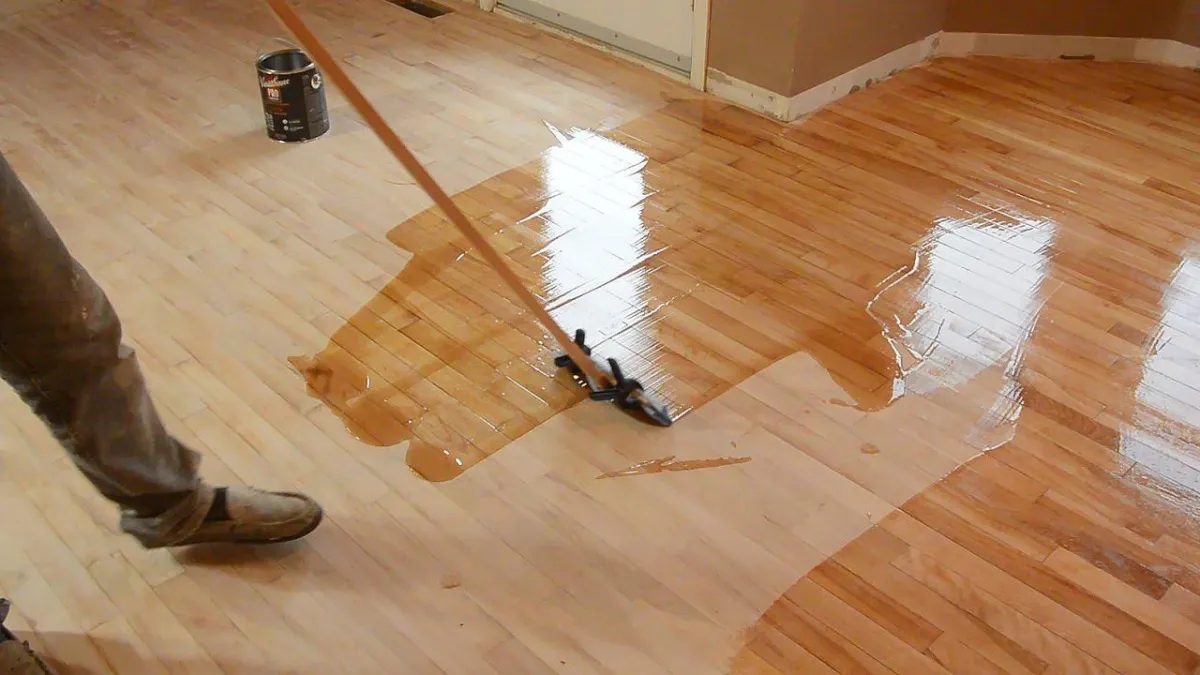FAQ
FAQ
Coming Soon...

How To: Wood Floor Refinishing
Refinishing a wood floor can breathe new life into its appearance and restore its original beauty. Here's a step-by-step guide on how to refinish a wood floor:
Prepare the Area: Clear the room of furniture, rugs, and any obstacles. Ensure proper ventilation by opening windows or using fans.
Assess the Floor: Inspect the wood floor for any damage, such as scratches, stains, or gouges. Determine if the floor is suitable for refinishing, as excessively worn or damaged floors may require professional intervention.
Sand the Floor: Use a drum sander or a floor sanding machine to sand the entire floor surface, following the grain of the wood. Begin with a coarse-grit sandpaper and gradually progress to finer-grit sandpaper for a smooth finish. Pay extra attention to high-traffic areas and edges.
Remove Dust: Thoroughly clean the floor, ensuring all dust and debris are removed. Use a vacuum cleaner and tack cloth to achieve a clean and smooth surface.
Apply Stain (optional): If desired, apply wood stain to enhance or change the color of the floor. Test the stain in a small, inconspicuous area first to ensure it achieves the desired result.
Apply Finish: Apply a coat of polyurethane finish using a brush or roller, following the manufacturer's instructions. Allow the finish to dry completely before applying additional coats.
Sand Between Coats: Lightly sand the floor between each coat of finish using fine-grit sandpaper or a sanding screen. Remove dust before applying the next coat.
Final Coat and Cure: Apply the final coat of finish and allow it to cure according to the manufacturer's instructions. Avoid walking on the floor until the finish has fully cured.
Remember to wear protective gear, such as goggles and a dust mask, during the sanding and refinishing process. If you're unsure or prefer professional assistance, contact Premier Flooring Experts who can ensure a successful refinishing job with optimal results.
Coming Soon...

How To: Wood Floor Refinishing
Refinishing a wood floor can breathe new life into its appearance and restore its original beauty. Here's a step-by-step guide on how to refinish a wood floor:
Prepare the Area: Clear the room of furniture, rugs, and any obstacles. Ensure proper ventilation by opening windows or using fans.
Assess the Floor: Inspect the wood floor for any damage, such as scratches, stains, or gouges. Determine if the floor is suitable for refinishing, as excessively worn or damaged floors may require professional intervention.
Sand the Floor: Use a drum sander or a floor sanding machine to sand the entire floor surface, following the grain of the wood. Begin with a coarse-grit sandpaper and gradually progress to finer-grit sandpaper for a smooth finish. Pay extra attention to high-traffic areas and edges.
Remove Dust: Thoroughly clean the floor, ensuring all dust and debris are removed. Use a vacuum cleaner and tack cloth to achieve a clean and smooth surface.
Apply Stain (optional): If desired, apply wood stain to enhance or change the color of the floor. Test the stain in a small, inconspicuous area first to ensure it achieves the desired result.
Apply Finish: Apply a coat of polyurethane finish using a brush or roller, following the manufacturer's instructions. Allow the finish to dry completely before applying additional coats.
Sand Between Coats: Lightly sand the floor between each coat of finish using fine-grit sandpaper or a sanding screen. Remove dust before applying the next coat.
Final Coat and Cure: Apply the final coat of finish and allow it to cure according to the manufacturer's instructions. Avoid walking on the floor until the finish has fully cured.
Remember to wear protective gear, such as goggles and a dust mask, during the sanding and refinishing process. If you're unsure or prefer professional assistance, contact Premier Flooring Experts who can ensure a successful refinishing job with optimal results.
